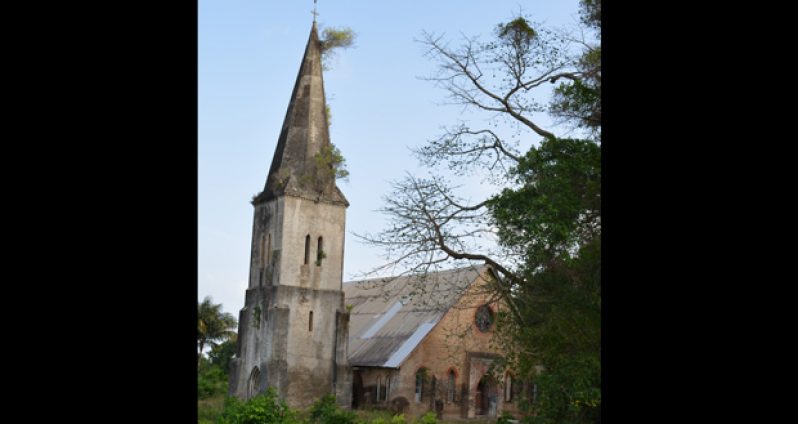Leguan, one of the few inhabited islands of the Essequibo, sits squarely in the mouth of the river, a relatively short speedboat ride from Parika.One of the classical and architectural structures remains the historical Dutch Church- St. Patrick Anglican Church- with its artistic designs and leaning tower it was originally constructed on December 9, 1827. The building was, however, replaced on St. Peter’s Day, June 29, 1855.
Prior to the erection of the first church, services were held under a clump of bamboo trees. On November 25, 1826, as recorded by the pencil minute of foolscap in the vestry book of the Parish, a meeting was held in the house of Captain Thierens of Plantation Vissilvalligheid. At this meeting, it was decided that a church and parsonage should be built. A site was chosen on the front lands of Plantation Enterprise, Leguan, where the church is somewhat still functioning today.
While it stands as an important part of Guyana’s built heritage, representative of an integral chapter of our social and cultural development, sadly, it has fallen into a state of dilapidation, with a roof that is in dire need of repair among other areas.
Historians note that many of the Dutch never left the Colonies and are the ancestors of many Guyanese. Throughout the creeks there are flagons, demijohns, hand-blown wine bottles, decanters, crocks, pots and flasks. But mostly it’s gin. If it’s possible to read history from the rubbish, then a curious picture emerges.
Historical Dutch Architecture: The St. Patrick Anglican Church
SHARE THIS ARTICLE :
Facebook
Twitter
WhatsApp





.jpg)








